WATS/CEWA 6626 - Syllabus
This course was originally advertised as in-person. Due to travel restrictions for many of our professional target audience, it was switched to fully online.
Course Information
| Course Title | Course Number | Credits | Term |
|---|---|---|---|
| Advanced LTPBR Planning | WATS/CEWA 6626 | 1 Graduate Credit (1.5 CEUs) - 20 contact hours | Fall 2025 |
Catalog Description
Advanced course in site-scale planning of LTPBR projects using Riverscapes Studio. Students will assess current, historic and potential future conditions of riverscape health to prepare for design. One week short over video link.
Details
Prerequisite Recommendations
Students are recommended to be proficient in GIS (See: getting started in QGIS for self-paced; see USU's Geospatial Collective for more formal training options).
Registration
- Matriculated USU Students: Register via Banner
- Continuing Ed/Professional Students: CEWA
Schedule
| Class | Time | Days | Location | Dates | Instructor(s) |
|---|---|---|---|---|---|
| Online - Google Meet | 9:00 am - 12:00 noon; 2:00 to 4:00 pm | Mon, Tue, Wed, Thu | Google Meet | Sep 29, 30, Oct 1, & 2, 2025 | Professor Joe Wheaton, Josh Gilbert, Zach Burgert, Phlip Bailey |
Instructor of Record
Office Hours - By appointment this semester.
Fees
- Matriculated Students: pay standard USU tuition. No additional fees.
- Continuing Education Students: $315 (includes $45 CEU processing fee).
Course Objectives
By the end of this course, students will be able to:
- Use Riverscapes Studio to complete LTPBR Planning process for their own project.
- Apply concepts of Conservation Planning Process and LTPBR Planning taught in WATS/CEWA 5622, but with QRiS and quantiative mapping and analysis.
- Read a riverscape and document conditions using Riverscapes Studio Protocols.
- Analyze current, estimated historic and potential future riverscape health conditions for their project riverscape.
- Evaluate risks and opportuntiies and produce a defensible plan of recovery potential for their site to inform LTPBR restoration design.
- Create a presentation and report of their findings, post draft project to the Data Exchange, and if appropriate proposed actions to PBR Explorer.
Course Resources
The course will use:
Main Course Resources Page
The main page for course materials and resources is on the QRiS Webiste.
QRiS & QGIS
Riverscapes Studio plugin to QGIS will be the software used in this course.
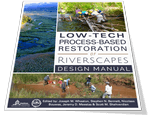
Chapter 3 LT-PBR Manual
Chapter 3 of LTPBR Design Manual is on Planning

Module 3 Self-Paced Modules
Content from WATS/CEWA 5622 Module 3 on Planning
We will NOT be using Canvas for this class. All communication outside of class time will be on our Advanced LTPBR Series Community on the Riverscapes Consortium. Assignments will be submitted by sharing your Riverscapes Studio Projects and as posts in our community.
Community Resources
These communities from the Riverscapes Consortium are great places to ask questions, connect with colleagues and share your work.
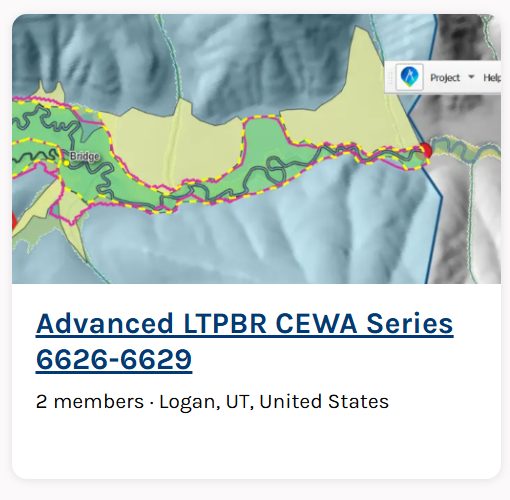
Advanced CEWA LTPBR Series Community
The community for connecting with others in this class and the advanced series of Adavanced LTPBR courses. This is in lieu of Canvas.
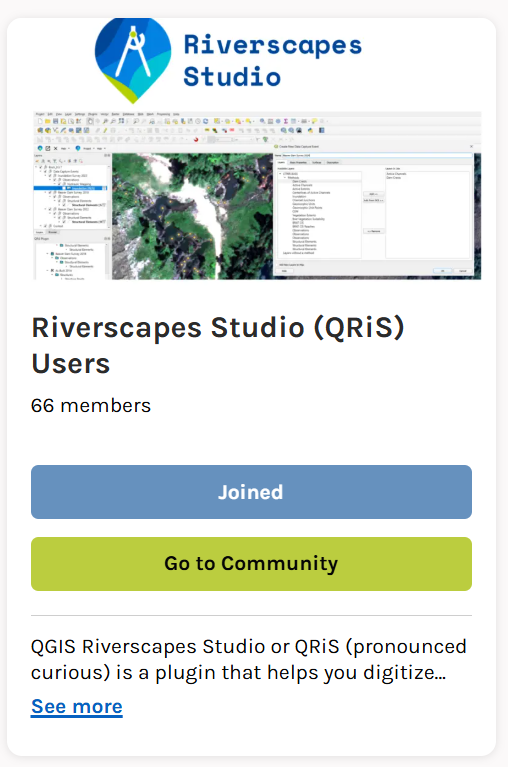
Riverscapes Studio Users
Community of QRiS Users. Stay up to date on latest releases, webinars, trainings, ask questions and share your work.
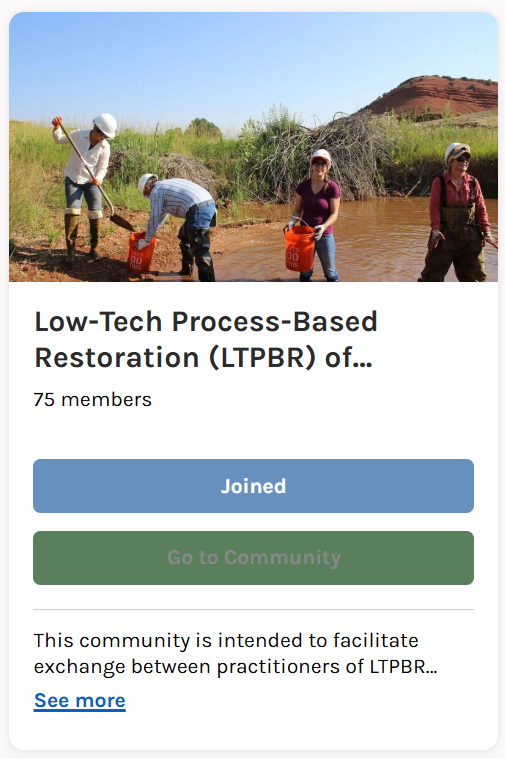
LTPBR of Riverscapes - Practitioner Community
This community is intended to facilitate exchange between practitioners of LTPBR anywhere in the world.
Textbook

LT-PBR Manual
The 2019 Low-Tech Process-Based Restoration of Riverscapes Design Manual (Free/Required). Focus on Chapter 3 of the Design Manual.
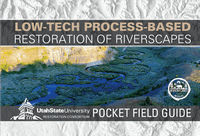
Pocket Guide
A LTPBR Pocket Guide to take with you into the field (Optional)
Course Grading
Pass / Fail Grading based on completion of project assignment and participation. Simple: do the work - pass.
University Policies
USU policies apply, including:
- Attendance
- Academic Integrity
- Student Code
- Library Services
- Disability Resource Center
- Counseling & Mental Health
- Title IX & Equity
If you experience barriers or need accommodations, please reach out to the instructor or DRC as early as possible.
